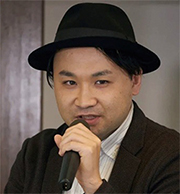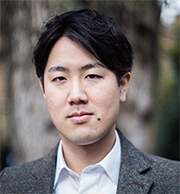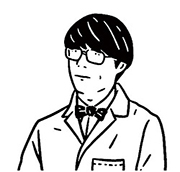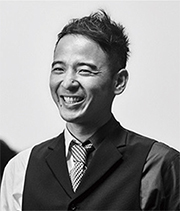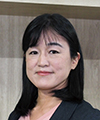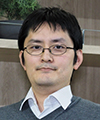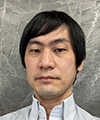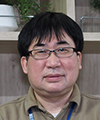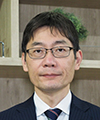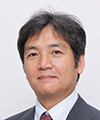 |
|||||||||||
|
|
|||||||||||
|
Special Report Vol. 21, No. 4, pp. 43–48, Apr. 2023. https://doi.org/10.53829/ntr202304sc1 The Future of New Technologies of NTT Envisioned with Sci-fi ImaginationAbstractScience fiction (sci-fi) is sometimes a rehearsal of the future, and it gives us ideas to prepare for that future. The future of the technologies “Another Me” and “mind-to-mind communication,” which NTT has been researching and developing, are depicted by NTT Human Informatics Laboratories, sci-fi writers, and WIRED Sci-Fi Prototyping Lab—the research institute of the technology and culture magazine WIRED JAPAN. Thus, what are the results of their depictions? Keywords: digital twin, sci-fi prototyping, sci-fi novel 1. IntroductionOur goal is to use science fiction (sci-fi)-based imagination to expand the future possibilities of current technologies. With that goal in mind, NTT Human Informatics Laboratories, together with WIRED Sci-Fi Prototyping Lab [1] and sci-fi writers Ryo Yoshigami (Photo 1) and Itsuki Tsukui (Photo 2), have created a vision of the future brought about by two technologies: “Another Me” [2] and “mind-to-mind communication” [3].
This article reviews the process and results of the project involving NTT Human Informatics Laboratories, WIRED Sci-Fi Prototyping Lab (Tomonari Cotani, director (Fig. 1) and Michiaki Matsushima, head of editorial content of WIRED Japan (Fig. 2)), Naoki Ito, chief creative officer and founder of PARTY (Fig. 3), Satoshi Yamabe, legal strategist of PARTY (Photo 3), and sci-fi writers Ryo Yoshigami and Itsuki Tsukui.
2. The digital twin of “me” and new communication that transcends differences in individual characteristicsNTT has been researching and developing Another Me, which is technology that aims to expand opportunities for people to play an active role and grow by having “another person,” a digital reproduction of a real person, act autonomously as that person beyond the constraints of reality, and share the results of that autonomous action as the person’s own experience. In other words, Another Me can be described as a digital twin of “me,” and it is envisioned to be used for a variety of purposes—such as acting as a substitute for work, overcoming physical disabilities, and simulating human relationships. NTT has also been researching and developing mind-to-mind communication, which is technology aimed at enabling a new type of communication that transcends differences in individual characteristics, such as experience and sensitivity, as well as language and culture in a manner that lets us directly understand each other in terms of how we perceive and feel in our minds. These two technologies are key pillars of the Digital Twin Computing initiative [4] announced in June 2019, which aims to create the foundation for building digital twins for autonomous social systems, expansion of human capacity, and automated decision making. 3. With imagination, you can go anywhereShingo Kinoshita, director of NTT Human Informatics Laboratories, says, “Because both technologies have such a large impact on society, we thought it was necessary to imagine a wide range of futures, from utopia to dystopia, so we subjected them to sci-fi prototyping.” Sci-fi prototyping is a method of envisioning the future through sci-fi, namely, backcasting from that starting point in the future and considering what we have to do from now towards that future. A sci-fi-prototyping program was implemented in collaboration with WIRED Sci-Fi Prototyping Lab, which was jointly launched by the Japanese edition of WIRED, a tech-culture magazine that “implements the future,” and the creative crowd called “PARTY.” The method developed by the Lab envisions four steps: hypothesis, sci-fi, convergence, and implementation. We carried out the two steps from hypothesis to sci-fi illustration. Tomonari Cotani, director of the Lab, talks about the characteristics of sci-fi prototyping as follows. “Sci-fi prototyping can precisely depict people living in a future society through narratives. Considering the aspects of a future society through a story is, consequently, akin to perceiving that society as a whole at once in a manner like grasping the whole story intuitively. Albert Einstein once said, ‘Logic can only go from A to B, but imagination can go anywhere.’ I believe that the value that sci-fi prototyping offers is to explore a ‘possible future’ that differs from the usual perspective by bringing imagination to the front lines of business, research, and government.” 4. Envisioning the future through a collective creative processWhat exactly was the process followed by the project? After receiving input from NTT Human Informatics Laboratories and interviewing researchers, WIRED Sci-Fi Prototyping Lab, sci-fi writers, and NTT researchers held regular meetings to generate and discuss ideas, which led us to establish various future use cases for Another Me and mind-to-mind communication. To examine the future from a more multifaceted perspective, as well as the editors of the Japanese edition of WIRED, creators, a copywriter, a legal strategist (attorney), and other members of PARTY participated in the project. Michiaki Matsushima, head of editorial content of WIRED Japan, recalled that “WIRED Japan’s approach to covering specific new technologies in conjunction with other emerging technologies and broader, cross-disciplinary perspectives on liberal arts, culture, and lifestyle probably provided the starting point for speculative questioning during the project.” Naoki Ito, who leads PARTY, reflected, “I think we were able to combine the capability of NTT’s researchers specializing in engineering and science with the power of sci-fi and creativity in a manner that encouraged speculative questions.” In this process, we examined various use cases that had not been envisioned before, such as Another Me for dementia patients and using Another Me for increasing the number of people who get involved with the community. In fact, sci-fi writer Ryo Yoshigami recalls the town-wide use of Another Me, which enables dementia patients to live without a caregiver by implementing a partial Another Me that assists their brain functions, was the starting point for writing a novel. 5. What is the legal status of Another Me?It should be noted that a legal strategist participated in the project. Technologies that have the potential to be widely used in society cannot be separated from laws and regulations. Accordingly, the participation of a legal expert, an attorney, made it possible to discuss the hurdles in implementing the technologies in question in society. Satoshi Yamabe, a legal strategist of PARTY, gives his thoughts from a legal perspective as follows. “We repeatedly discussed the legal subjectivity of Another Me, the digital twin of ‘me.’ It is socially impossible to grant Another Me all the human rights that real people naturally enjoy. For example, if an Another Me’s right to life is guaranteed, even the owner cannot erase it without permission, and the Another Me may legally defend itself against other people. On the contrary, if we have a mechanism for guaranteeing the decision-making concerning the management and disposal of property, I think it may be possible to either recognize property rights to a certain extent or achieve a similar result by utilizing existing systems such as juridical foundations. These discussions with sci-fi writer Ryo Yoshigami were reflected in the plot of his sci-fi prototyping novel.” “The process of discussions among the project members with various specialties—bringing together a wide variety of ideas from different positions and perspectives and incorporating them into a single theme (or story)—seemed to me to be similar to the process of screenplay production, which is a collective creation,” said sci-fi writer Ryo Yoshigami. For sci-fi prototyping, the final product is a novel, so the final storytelling decisions are left to the writer. Therefore, he continued, “Sci-fi prototyping is a creative activity that cannot be accomplished by a single artist alone, because it lies between writing a novel and developing a screenplay. It thus utilizes the best parts of both processes to provide an answer to the subject matter of technology in the artist’s own unique narrative style while also gaining a broader perspective than the artist could achieve alone.” 6. Keywords such as “pain,” “rural area,” and “family” are integrated into the novelsThrough the above-described process, the novels “Another pain.” by Ryo Yoshigami and “Developing Sensibility Society (in Japanese)” by Itsuki Tsukui were completed. “Another pain.” is a novel set in the year 2054 in Cape Kannon, the northeastern tip of the Miura Peninsula in Yokosuka City, Kanagawa Prefecture, and it features a girl named Migiwa and her “grandmother” Misaki, who live in the town facing the sea. Migiwa is the entity called Another Me, and Migiwa’s “main body” is Misaki, but for some reason, Misaki calls Migiwa, who is her own digital twin, “grandchild.” And Migiwa is set up with a “pain-feeling function” that should be turned off in Another Me. As Migiwa unravels the questions, “Why am I Misaki’s grandchild?” and “Why do I feel pain?”, the way in which Another Me is used is described. The starting point of the story, besides the legal consideration of Another Me that appeared in the aforementioned discussion with Satoshi Yamabe, was the “rural area” and “family and partnerships” perspectives. Ryo Yoshigami explained, “Although the implementation of technology in urban areas can be thought of on an individual basis, in rural areas, we must think in units of communities and groups. Moreover, considering the process of new technology spreading to rural areas, we must imagine the future of Japan as a whole in which the technology spreads throughout society.” In the workshops, he also focused on a point that often appeared, “relationships with the family through Another Me,” and he thought about questions related to the view of life and death, “How do you handle your widowed partner or family member’s Another Me?” and “What kind of existence will Another Me become in society after the real person it represents dies?” He continued, “I gradually established the theme of the story, namely, the relationship between people and tools. That relationship could be one in which people sometimes treat their Another Me, who has accumulated experiences that are more like the real person than that the person actually is, as a convenient tool or, at other times, as a companion that should be more than a tool.” After reading this sci-fi-prototyping novel, Atsushi Fukayama, who has been engaged in research on Another Me, raised several points. One point was that in Ryo Yoshigami’s story, the evolutionary steps of Another Me are taken in the order of “tool,” “servant,” “personality,” and “delegation.” Another point was the introduction of the concept of “pain” felt by Another Me. He stated, “As for pain, it is the axis of one way of thinking. I was able to feel the reality of the future by talking about the line between people and technology/tools through multifaceted aspects such as sadism, mind, and personality. Even unexpected usage is discussed by stating, ‘If there is such a technology, it will be used in this way.’ I thus believe that we were able to examine use cases from various perspectives.” 7. Depicting processes from the measurement of sensitivity to how it is usedIn “Developing Sensibility Society” by Itsuki Tsukui, an “immersive-sensitivity test” is used to measure and analyze sensitivity on the basis of “impression resolution” (i.e., how finely different impressions of things can be perceived) and “degree of impression selection” (i.e., the degree to which each distinguishable impression is preferred), and a setting through which a unique sensitivity code is derived for each individual is introduced. The main character is Alicia Koizumi, who works for a company called Estesia Corporation developing immersive-virtual reality (VR) games, which have become a huge hit by allowing game creators to use their own sensibilities to create games and market them to people with similar sensibilities. She is transferred from the star-performer First Development Office to the Sixth Development Office, and the story explains how she participates in an experiment called “immersive sensibility deepening” (or “sensibility training”), which artificially enhances the impression resolution of a specific part of human sensibility in a manner that makes it possible to decipher the possibilities of using sensibility. Since mind-to-mind communication covers a wide range of specific research, and the definition of “mind-to-mind” (sensitivity) and approaches to “communication” varied, Itsuki Tsukui narrowed down the definition of “mind-to-mind” (sensitivity) to some extent and summarized it in his work. One of the studies that inspired the idea of “Developing Sensibility Society” was to analyze the decisions of professionals in the cases of shogi, Japanese chess, and car racing. Mr. Tsukui said, “It is difficult to digitize each person’s ‘view of things’ and their ‘aesthetics.’ Even so, I was convinced that a means of recording and comparing behavior under specific rules and circumstances might reveal a person’s sensibilities, namely, preferences for various impressions and the sharpness of their discerning eye.” Based on such research, the work (“Developing Sensibility Society”) incorporates a setting of “immersive-sensitivity test” that measures and analyzes human behavior in a simulated experience space similar to that of a VR game. Mr. Tsukui recalls that, starting from this test, he expanded the world of his work by thinking about how to express the test results and how to use them in the fields of business and education. Hajime Noto, who has been engaged in research on mind-to-mind communication, says that the creation of the work “created a common understanding among fellow researchers.” He continued, “By having the participants draw a consistent picture of the process from the measurement of sensitivity to its concrete use, we were able to clarify one of the goals of the research, which is centered on the theme of sensitivity, and I believe we were able to organize the issues to be considered. In doing so, I believe that the image of how this technology will be accepted by people has become clearer thanks to Itsuki Tsukui’s concrete description of how the technology will permeate society.” 8. Incorporate the envisioned future into research plansSince this sci-fi prototyping program took us up to the second step, sci-fi, in which the future is depicted, we will now move on to the backcasting process, in which the depicted future image is incorporated into research plans. Hajime Noto says, “I believe that the output novels will help convey to NTT internal members the depictions of Another Me and mind-to-mind communication being accepted as a service. I also feel that they will be effective in terms of dissemination of information to the outside world. I hope that such novelization of our research will generate interest, facilitate a deeper understanding of the concepts and worldview of our research, and facilitate discussion from there. In turn, those outcomes will lead to further examination of our technology and its penetration into society.” “Another pain.” by Ryo Yoshigami and “Developing Sensibility Society” by Itsuki Tsukui are also published in the booklet included in the NTT Technical Journal and on our website [5] (the novels are in Japanese only). We hope that our readers will take a look at them and discuss with us how the world in which Another Me and mind-to-mind communication are widely accepted will change and what challenges will arise in that world. We believe that discussions with our readers, starting with sci-fi prototyping, will advance our research to the next step. References
|
|||||||||||









